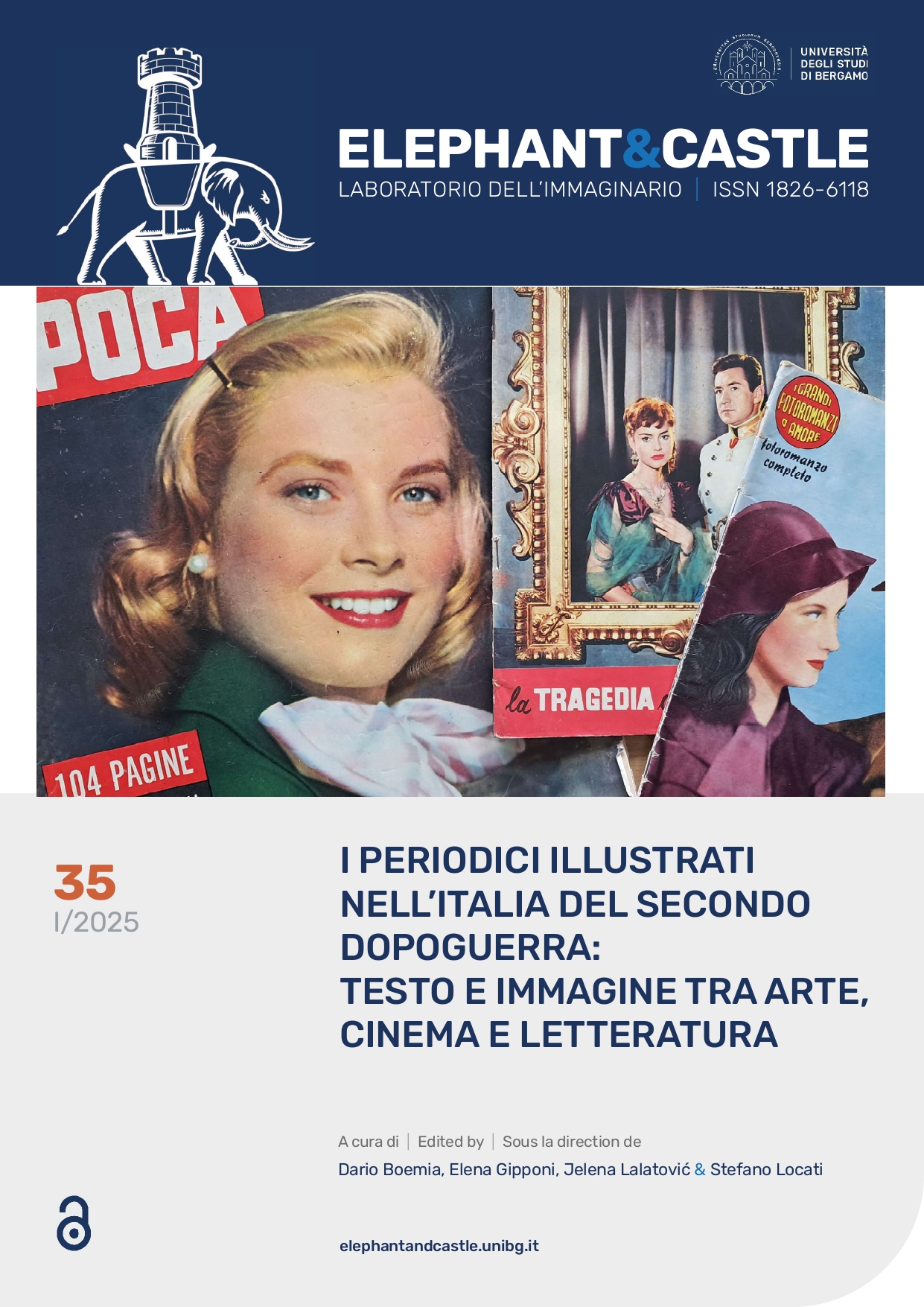La leggenda dell’artista attraverso le pagine dei rotocalchi: "Epoca" (1950-1958)
DOI:
https://doi.org/10.62336/unibg.eac.35.563Parole chiave:
rotocalchi, fotogiornalismo, artista, leggenda, mitoAbstract
Il presente contributo intende indagare una particolare declinazione del rapporto testo-immagine attiva all’interno del panorama dell’editoria periodica del secondo dopoguerra: ovvero quella volta alla rappresentazione degli artisti visivi (in particolar modo pittori) tramite cui si evolve e si diffonde una certa ‘iconografia’ degli stessi. L’analisi sarà condotta attraverso lo spoglio dei numeri della rivista Epoca usciti nel decennio 1950-1958, tra le cui firme spicca quella del critico d’arte Raffaele Carrieri. Tale iconografia si dimostra in parte tesa al mantenimento di alcuni dei topoi che sin dal Rinascimento avevano concorso a fare dell’artista un modello di eccentricità (tra biografia e autoritrattistica) ma esprime anche un’esigenza di ‘addomesticamento’ della sua immagine al fine di renderla accessibile alla nuova tipologia di pubblico cui il rotocalco si rivolge. La fotografia, come è naturale, ebbe un ruolo di primo piano in questo processo di costruzione dell’immaginario collettivo post-bellico, per cui nel saggio si cercherà di indagarne sia la relazione con il testo scritto che l’accompagna (a livello di contenuti quanto di layouts) sia di metterla in rapporto con la tradizione precedente sul tema e di considerare l’impatto provocato dall’incontro col nuovo regime scopico prodotto dalla cultura di massa.
Downloads
Pubblicato
Come citare
Fascicolo
Sezione
Licenza
Copyright (c) 2025 Elephant & Castle

TQuesto lavoro è fornito con la licenza Creative Commons Attribuzione 4.0 Internazionale.






